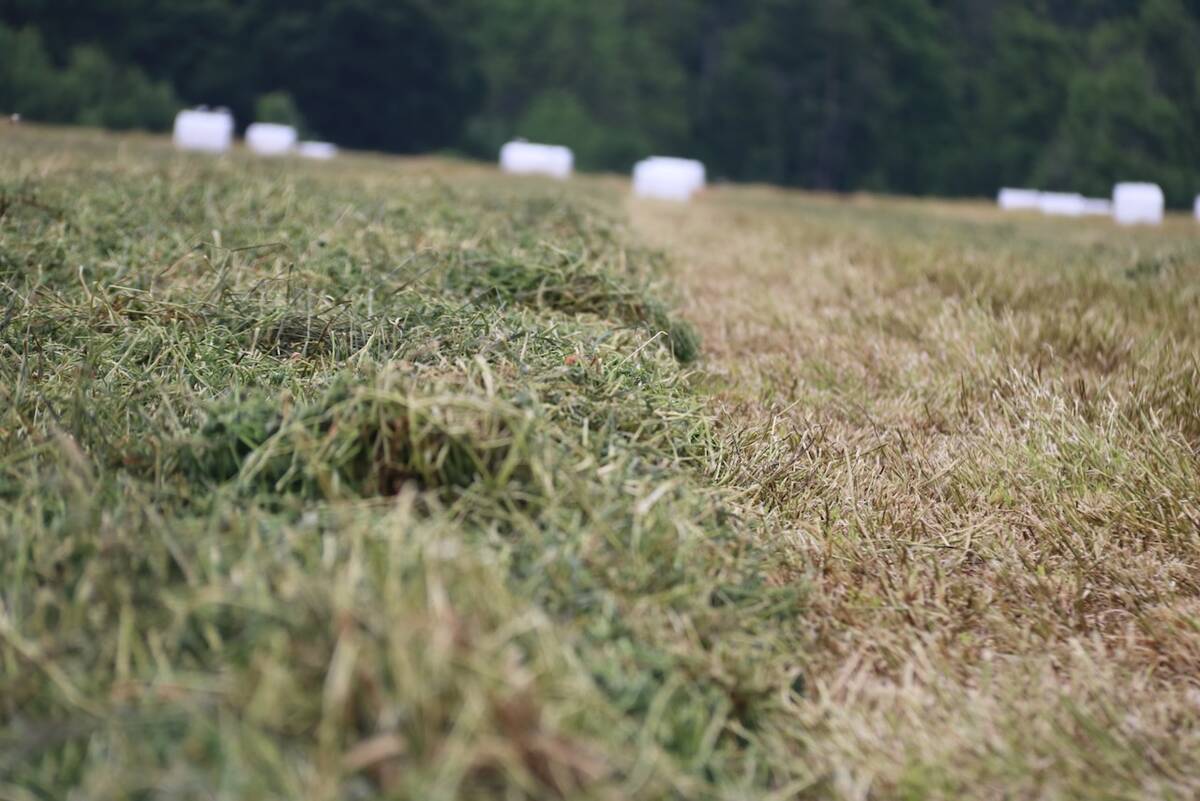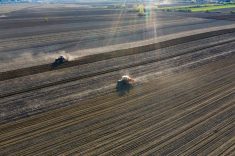Small losses can add up to a big expense. Learn how to calculate your harvest losses in dollars per hour
Harvest is hectic, and adding more items to the to-do list isn’t easy. But failing to check for leaks could add up to big harvest losses.
“I talked to one fellow and he had said he was glad that he’d checked because he thought he was doing okay. He checked and he estimated there was probably somewhere around nine bushels an acre in canola that was coming out,” says Les Hill, manager of applied agricultural services at the Prairie Agricultural Machinery Institute (PAMI) in Humboldt, Saskatchewan.
Read Also

New high-performance forage training program to launch in 2026
A new Canadian Forage and Grasslands Asssociation high-performance forage program will be a resource for farmers, agronomists and others in the forage sector.
Cutting losses to zero isn’t practical; farmers need to decide what loss levels are acceptable. Hill says while people usually think of harvest losses as percentages or bushels per acre, it’s probably easier to think of them in dollars per hour.
“Five bushels an acre (of losses) at $10 a bushel, and you’re doing 15 acres an hour, you do the math on that and all of a sudden it adds up to a pretty big number,” says Hill.
Hill suggests measuring losses first to see if there’s a problem. Looking at the residue on the field, or even the yield monitors, isn’t a reliable way to gauge losses.
Hill recommends placing a pan under the combine to measure losses. Though some farmers use scoop shovels, it’s hard to hold the shovel under the combine for the same amount of time during each measurement.
The Canola Council of Canada outlines a simple sampling process in its enewsletter, Canola Watch. The straw chopper and chaff spreader should be disengaged first so all the straw and chaff drops into the pan. Farmers should put the pan in front of the chaff and straw discharge. Attaching a long handle to the pan makes this easier. The council also recommends holding the pan upside down until it’s in place, then flipping it over, to get a more accurate sample.
Farmers then need to separate the seed from the straw and chaff. One way to do that is to pour the sample into a five-gallon pail, then blow out the chaff and straw using a hair dryer.
Measuring losses
Once the seed is clean, it must be measured. The Canola Council recommends weighing it with a scale that measures in 0.1 gram increments. The Council suggests calculating the canola seed’s weight per square foot. If the collection pan’s area is one square foot, this is already done. If the collection pan is two square feet, for example, divide the weight by two.
Farmers then need to calculate the concentration factor for their combines by dividing the cut width by the discharge width. For example, if the combine cuts a 30 foot strip and discharges trash in a strip five feet wide, the concentration factor is six (30/five).
From there, you can use the table to calculate your loss in pounds per acre, or just do the math: first, take the loss per square foot as collected in the pan (measured in grams), and divide it by the conversion factor. (For example, a loss of 4.2 grams per square foot divided by a conversion factor of six equals 0.7 grams per square foot of actual loss.) To see this in terms of pounds per acre, divide it by 0.010413 (in the example, 0.7 divided by 0.010413 equals almost 100 pounds per acre — a loss of two bushels of canola per acre.)
Once the per acre loss is calculated, multiply it by the number of acres combined in an hour, and the price per bushel to see how much money you’re losing every hour.
Hill suggests developing a routine to systematically check for holes and leaks. Canola can come out the hopper, the covers around the separator, the junction between the feeder house and the header and the feeder house and the combine. A fast or slow fan speed can also cause losses.
Shoe loss is often a major culprit. “If something happens in the cleaning system where a portion of it quits working, a whole lot of grain can go over very easily and you just are not going to necessarily detect that. The problem is, it’s mixed in with all the chaff so it’s cushioned and it’s just not going to register,” says Hill.
Other factors can play into harvest losses, too. When canola dries quickly in hot, dry weather, plant juices will dry into a sticky dust. “The chaff will stick together and stick onto things. And it doesn’t fluidize as well going through the cleaning system,” Hill explains.
Going too slow can lead to losses from underthreshing. Underthreshing signs include pulverized straw dropping through the sieves and cracked seed. The Council suggests widening the concave setting or lowering the cylinder speed.
But Hill cautions against going too fast, too. He explains the separator and cleaner in combines with more horsepower are often the same as the internal components in models with fewer horses.
“in all of the testing we’ve ever done, it tends to be the more you feed into it, the more you’re going to lose,” says Hill. †















